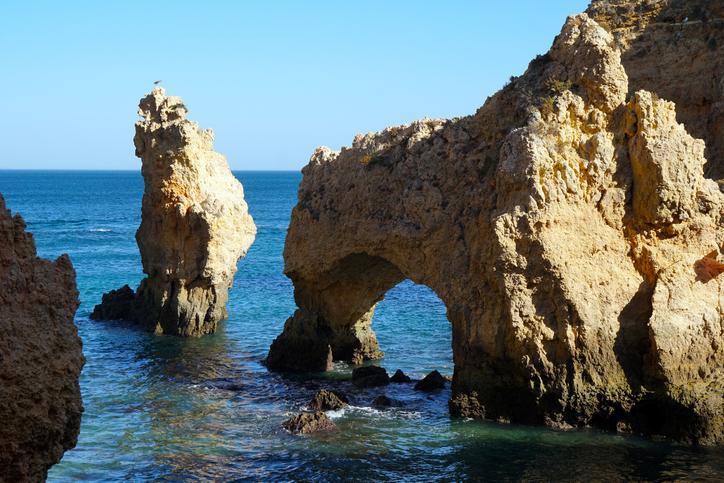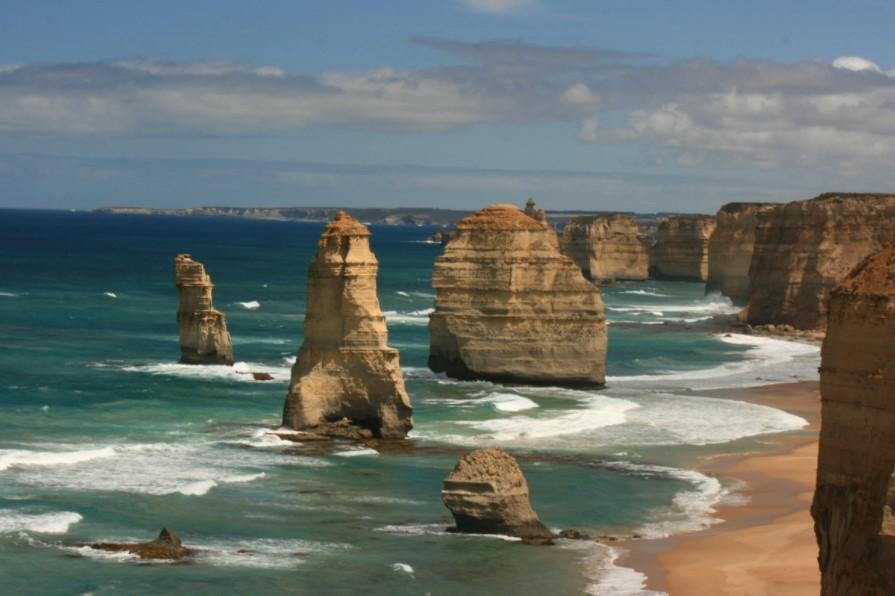What Is Coastal Erosion? - Definition, Causes and Types


The enchanting rise and fall of ocean waves has always stirred our imagination. But behind their serene beauty lies a powerful force of nature that shapes and reshapes the intricate contours of our coasts. This force is known as coastal or marine erosion, a fascinating geological process that shapes the landscapes we admire and affects the delicate balance of coastal ecosystems.
In the following article from thedailyECO, we explore the concept of coastal erosion, its mechanisms, its various manifestations, and its effects.
What is coastal erosion?
Coastal erosion refers to the process of wearing away and reshaping coastal landforms and features through the action of marine forces, particularly waves, currents, tides, and the movement of sediments in the marine environment. It is a natural geological process that occurs along coastlines worldwide.
Over time, this continuous erosive action can result in the formation of various coastal landforms, including cliffs, sea stacks, arches, caves, and beaches.
There are several key characteristics associated with coastal erosion:
- Waves are a primary driving force behind coastal erosion. The continuous motion of waves against the coast exerts immense pressure and abrasion, gradually wearing down rocks and sediments.
- Waves and currents play a crucial role in transporting sediment along the coast. As waves retreat, they create bottom currents that carry and deposit sediments, reshaping the coastal features.
- The susceptibility of rocks to coastal erosion can vary depending on their specific characteristics, such as porosity, hardness, and mineral composition.
- The intensity and duration of wave action, tidal forces, and other environmental factors also influence the rate of erosion.
- Chemical processes also play a role in coastal erosion. The chemical composition of seawater, including its salt content, can contribute to the breakdown and dissolution of certain types of rocks.
- Coastal erosion not only shapes the physical landscape of coastal areas, but also influences the ecological dynamics of coastal ecosystems.
You might be interested in this other article, where we explain how are mountains created.

What causes coastal erosion?
Coastal erosion occurs through the combined action of various forces in the marine environment, primarily waves, currents, tides, and sediment movement. Here is a breakdown of how these factors contribute to coastal erosion:
Waves
Waves are a significant driver of coastal erosion. As waves approach the shoreline, they carry kinetic energy that is transferred to the coastal landforms. The force of the waves, especially during storm events, can dislodge and transport sediments, rocks, and other materials. The impact of waves against the coastline, known as wave impact or wave pounding, can erode and wear away the land.
Ocean currents
Ocean currents, including longshore currents and rip currents, play a role in transporting sediments along the coast. Longshore currents move parallel to the shoreline and can transport sediments in a lateral direction, contributing to erosion and sediment deposition in certain areas. Rip currents, on the other hand, are narrow and fast-moving currents that flow seaward, often cutting through sandbars and causing erosion.
Tides
Tidal forces exerted by the gravitational pull of the moon and the sun can influence coastal erosion. During high tides, the increased water levels can intensify wave action and allow waves to reach higher on the shore, potentially causing more erosion. Conversely, during low tides, the exposure of previously submerged coastal areas to air can lead to different erosion patterns.
Sediment movement
Sediments, such as sand, gravel, and rocks, are continually transported by waves and currents along the coastline. As these sediments move, they can abrade and erode coastal features. The size, shape, and composition of the sediments, as well as their energy level and availability, all influence the erosive capacity and pattern of coastal erosion.
What are the types of coastal erosion?
Now, let's explore the various types of coastal erosion and their distinct characteristics:
Abrasion
Also known as mechanical or physical erosion, abrasion occurs when waves and currents transport and grind sediments against coastal rock surfaces. The repeated impact and rubbing action of sediment particles cause gradual wearing down and smoothing of the rock.
Hydraulic action
Hydraulic action refers to the forceful impact of water against the coastline, especially in areas with joints, faults, or weaknesses in the rock. The pressure and turbulence of the water can dislodge and remove loose fragments of rock, leading to erosion.
Solution
Solution erosion occurs when certain types of rock, such as limestone or chalk, are dissolved by chemical reactions with seawater. The water's acidity, influenced by dissolved carbon dioxide, can slowly dissolve and weaken the rock, causing it to disintegrate over time.
Corrosion
Corrosion, also known as chemical erosion, involves the chemical breakdown of rock materials due to interactions with seawater. Salts and acids present in the water can chemically react with minerals in the rock, causing it to decay or disintegrate.
Attrition
Attrition happens when sediment particles carried by waves and currents collide with each other and with the coast. This constant collision leads to the wearing down and rounding of the sediment particles, making them smaller and smoother.
What is an example of coastal erosion?
Coastal erosion gives rise to various distinctive geoforms and landforms. Let's explore some notable examples shaped by coastal erosion:
- Cliffs: are prominent features formed by the relentless pounding of waves against rocky slopes, resulting in steep and vertical coastal formations.
- Beaches: sandy shorelines that are formed by the deposition of eroded materials such as sand, gravel, and shells. Waves carry and deposit sediments along the coast, creating picturesque beaches.
- Marine arches: these are cliffs with perforations or openings created by intensified erosion in specific areas. These arches are formed when softer rock is eroded, leaving behind a natural bridge-like structure.
- Sea Caves: these caves often form in areas where the rock is less resistant to erosion, creating hollowed-out spaces along the coastline.
- Wave-Cut Platforms: these are flat, rocky surfaces that extend from the base of sea cliffs. They are formed by the erosion and retreat of the cliff face, leaving a level platform that is exposed during low tide.
In these examples, erosive sea power creates remarkable landforms, illustrating how coastal environments are continually transformed.
You might be interested in this other article, where we discuss how much of the earth is covered by water.

Consequences of coastal erosion
By now, you have a solid understanding of how coastal erosion shapes the coastal landscape. But its impact doesn't end there. This natural process carries significant consequences for coastal areas, affecting both the environment and the local economy.
One of the most notable effects of coastal erosion is the loss of coastal land, which can lead to the disappearance of valuable properties, infrastructure, and even entire communities. This loss can result in decreased tourism revenue, damage to coastal structures, and increased expenses for erosion control measures. The displacement of coastal communities and the loss of valuable real estate can also have long-lasting socioeconomic repercussions.
Moreover, eroded cliffs, dunes, and beaches can disrupt the nesting sites of marine creatures like seabirds and sea turtles. Coastal erosion also heightens the risk of flooding in vulnerable areas. This poses a serious threat to coastal habitats, ecosystems, and human settlements. Furthermore, the depletion of coastal vegetation and natural protective barriers can negatively impact the health and biodiversity of these delicate ecosystems.
If this topic piques your interest, don't miss out on our other article, where we delve into the various types of environmental impacts in more detail.

If you want to read similar articles to What Is Coastal Erosion? - Definition, Causes and Types, we recommend you visit our Environment (other) category.








